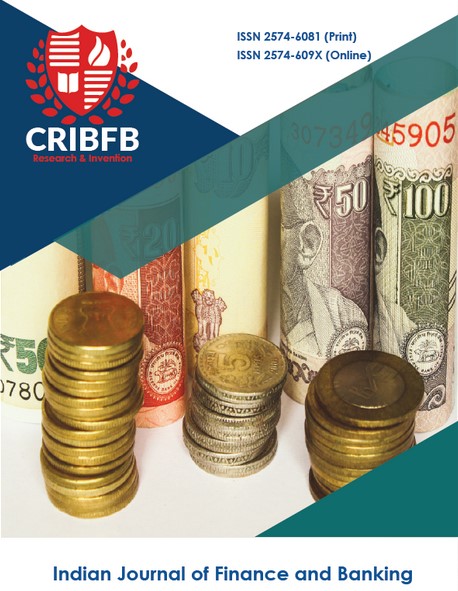Impact of Basel II & III Implementation to Mitigate Bank Risk: A Study on Al-Arafah Islami Bank Limited
Main Article Content
Abstract
This study has examined the implementation process, effects, outcomes, of Basel II & reforms of Basel III within the Al-Arafah Islami Bank Limited. The purpose of Basel II is to create regulation about how many capital banks need to put away to guard against the financial and operational risk. Basel III newly introduced accord provides stricter approach toward managing risk with capital in order to strengthen capital & liquidity structure of international banking system. The purpose & aim of this study is to analyze capital adequacy framework whether it is complied with the regulatory supervisions under the prescription of Bangladesh bank as well as its capability to absorb shocks arising from financial and economic stress. Published disclosures & financial statements of last five years are used to collect data. OLS regression model is used to find out the relationship between profitability and capital adequacy requirement in terms of relevant influencing variables (e.g. asset turnover, size of the firm, capital adequacy ratios).capital adequacy ratio of this bank is higher than minimum standard level. The average capital adequacy ratio (CAR) is about 13.78%. The result of regression analysis is statistically significant and there is a positive relationship between capital and return on asset (ROA).If the capital adequacy requirement is increased the return on asset (ROA) will be increased. Islamic Banking sector has some uniqueness compared to the conventional Banking sector. Products are linked with real economic activities that are why financial crisis of 2008 did not create any extreme pressure on this sector.
Downloads
Article Details
Section
How to Cite
References
Ackermann, J. (2008). The subprime crisis and its consequences. Journal of Financial Stability, 4(4), pp.329-337.
Ahmed M. N. and Pandit A.C.(2011). Implementation status of BaselII: Bangladesh perspective, Banking Research Series 2011, Bangladesh Institute of Bank Management(BIBM)
Ahmed, S., Ahmed, S., Islam, N. and Ullah, G. (2015).Impact of Basel II Implementation on the Financial Performance of Private Commercial Banks of Bangladesh. SSRN Electronic Journal.
Avgouleas, E. (2009). What Future for Disclosure as a Regulatory Technique? Lessons from the Global Financial Crisis and Beyond. SSRN Electronic Journal.
Barth, J., Caprio, G. and Levine, R. (2001). Bank Regulation and Supervision: What Works Best?. SSRN Electronic Journal.
BCBS (2010).Basel committee on banking supervision; Basel III: a global regulatory framework for more resilient banks and banking system; Available from http://www.bis.org/publ/bcbs189.pdf
Christian, C., Moffitt, J. S., and Suberly, S. A. (2008). Fundamental Analysis for Evaluating Bank Performance: What Variables Provide the Greatest Insight into Future Earnings? Journal of Bank Accounting Finance, 22,17-24.
Cornford, A.(2006) The Global Implementation of Basel II: Prospects and Outstanding Problems. SSRN Electronic Journal.
Gilbert, R. A., and Wheelock, D. C. (2007).Measuring Commercial Bank Profitability: Proceed with Caution, Federal Reserve Bank, St. Louis Rev., 22, 515-532.
Hakenes,H.,and Schnabel, I. (2010). Bank size and risk-taking under Basel II.Journal of Banking and Finance,35, 1436–1449.doi: 10.1016/j.jbankfin.2010.10.031
Hess, K., and Francis, G. (2004). Cost income ration Benchmarking in Banking, Benchmarking. An International Journal,3,pp.303-319
K.P.M.G (2011).Basel –III– Issues and Implications. International USA Retrieved from: http://www.kpmg.com/global/en/issuesandinsights/articlespublications/documents/basell-iii-issues-implications.pdf
Prakash, Anupam (2008). Evolution of the Basel framework on Bank capital Regulation, Reserve bank of India occasional papers, 29 (2). Monsoon 2008
Sarkar, A. and Bhole, L. (2008). Bank Depositors' Role as a Disciplinary Force in Indian Banking: A Dynamic Panel Approach. SSRN Electronic Journal.
Thadden, E. L. V. (2004). Guest editor’s introduction: Bank capital adequacy regulation under the new Basel Accord. Journal of Financial Intermediation, 13, 90-95.
VanHoose, D. (2007). Market Discipline and Supervisory Discretion in Banking: Reinforcing or Conflicting Pillars of Basel II?. NFI Working Paper No. 2007-WP-06
Van Roy, P. (2005). The Impact of the 1988 Basel Accord on Banks' Capital Ratios and Credit Risk-taking: An International Study. SSRN Electronic Journal.




